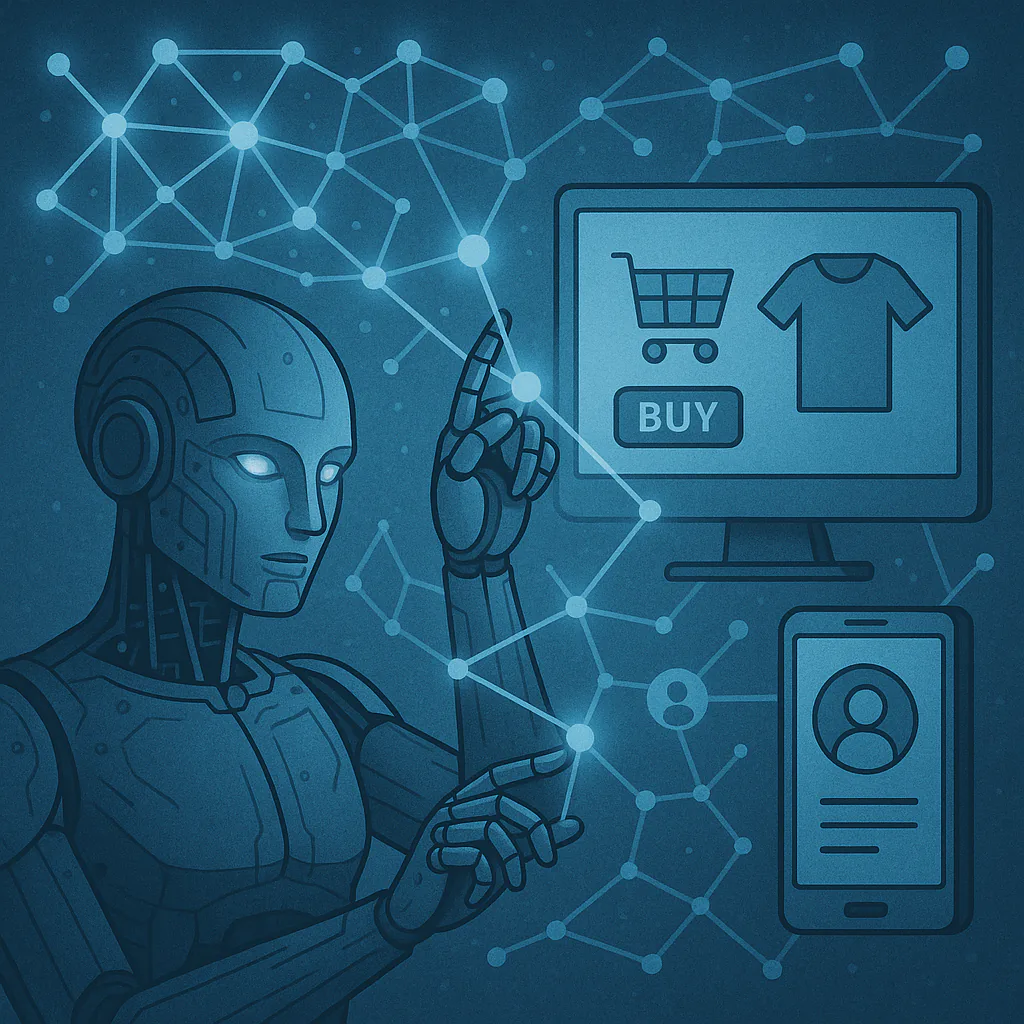

I’ve always been a fan of Apple and Steve Jobs, and he used to say: “People don’t know what they want until you show it to them.”
Today’s AI doesn’t just show — it predicts, delivers, and validates. And whoever masters this process will dominate the new retail landscape.
Ten years ago, Amazon filed a patent that seemed absurd: sending products to your home before you even clicked “buy.” A dream come true for Mr. Jobs.
That was 2013. The technology was already called Artificial Intelligence, but let’s be honest — it was a much more timid Artificial Intelligence: made up of regressions, decision trees, and algorithms that looked more like statistics on steroids. Honestly, a well-crafted sequence of “IF” statements is already a form of AI. Skinny, weak, not very sophisticated… but still Artificial Intelligence.
Today, in 2025, the scenario has changed completely. Artificial Intelligence not only predicts what you’ll buy — it decides what goes on the truck, optimizes the route, chooses the best urban warehouse, suggests the freebie, and even monitors whether you’re likely to return the order or not.
This article dives deep into the brutal evolution of artificial intelligence in retail and eCommerce — for those who don’t want to be the last to understand the game already being played.
From Jobs to Bezos — The Spark That Ignited This Movement
It all starts with Amazon’s 2013 patent called Anticipatory Shipping. In it, the company describes a system capable of predicting — based on past behavior and history — which products are likely to be purchased soon. These products would then be shipped even before the purchase was confirmed, enabling near-instant delivery.
At the time, it sounded futuristic. But it was already Artificial Intelligence. That is, if you don’t count the evil Skynet AI from The Terminator (1984).
Or rather: it was 20th-century Artificial Intelligence in modern clothes.
The AI of 2013: Good at Spreadsheets, Bad at Context
Let’s call it like it is.
In 2013, when someone said they were using “Artificial Intelligence,” they were usually referring to:
- Logistic regression
- Decision trees
- Algorithms like KNN, SVM, Random Forest
- Basic time series models (ARIMA, Holt-Winters)
And yes, that was already called AI — though often with air quotes. I’ll say it again: any intelligence that isn’t human is artificial. So anything that takes action based on inputs and prior knowledge (i.e., programming) is Artificial Intelligence, period. After all, there’s plenty of “human” intelligence that could also use some quotation marks.
Did the models work? Sometimes. But only if the data was clean, patterns were stable, and the world didn’t change too fast. Like a relational database — everything had to be well-defined and neatly organized.
It was prediction AI, not truly user-understanding Artificial Intelligence.

The AI of Today: Contextual, Multimodal, and Active
Now we’re on another planet. Maybe even Trantor, the cradle of psychohistory — the Artificial Intelligence created by Hari Seldon, the mathematician and central figure in Asimov’s Foundation saga.
Today’s retail Artificial Intelligence can:
- Read real-time behavior (navigation, clicks, screen time, scrolls, hovers)
- Unify distinct data sources: purchase history, weather, local events, social media
- Automatically generate campaigns, offers, and even personalized emails
- Decide what gets loaded on trucks in the morning — before orders come in
- And in some cases, deliver the item before the customer even thinks to search for it
The leap forward came from three main factors:
| Factor | What Changed |
|---|---|
| Models | We entered the era of Transformers, GPTs, BERTs, deep neural nets |
| Data | Much more real-time and cross-context data |
| Infrastructure | Urban logistics, automated warehouses, predictive routing |
Real Examples Already Happening (No Hype, No Fake News)
- Amazon (USA/Europe): Pre-positions products in hubs before purchases, based on regional and personal behavior
- JD.com (China): Ships predictive items with up to 80% conversion — including unsolicited items with a right of refusal
- Walmart (USA): Uses AI to decide what goes out in the first delivery round of the day, before online orders arrive
- Mercado Livre & Magalu (Brazil): Not yet delivering unsolicited items, but already pre-stocking dark stores using predictive data
The Big Shift: From Persuasive Marketing to Predictive Marketing
AI has gone from being an analytical tool to becoming an operational decision engine.
It doesn’t just understand the customer. It acts before the customer. Before the click. Before rational thought. It predicts precisely — and executes. Autonomously.
The new competitive edge lies in knowing what to deliver, when, where, and with what message — without even asking the customer.

And in Brazil… Can We Do That, Cortana?
Here things get a bit more complicated.
According to Brazil’s Consumer Protection Code, no product can be sent without the customer’s request — or it’s considered a free sample.
And under the LGPD (General Data Protection Law), using behavioral data and inferences requires a clear legal basis, consent (or a justified legitimate interest), and transparency.
In other words: unsolicited deliveries are still risky. But predictive stock positioning? Totally feasible — and highly strategic.
Food for Thought
AI is no longer a curiosity. It’s now the heartbeat of modern eCommerce.
- In 2013, it was a glorified spreadsheet — like John-117 before donning the Master Chief armor.
- In 2025, it’s the brain behind free shipping, tailored discounts, predictive stocking, and deliveries that arrive before the desire even forms.
If you’re not using Artificial Intelligence to predict consumer behavior and automate your response to it — you’re going to lose.
And you won’t even realize how you lost.
If you work in retail, tech, marketing, data, or logistics, this is your wake-up call:
AI isn’t coming. It’s already deciding what your customer will buy — with or without you.
Schedule a demo here.
Learn more about dbsnOOp!
Learn about database monitoring with advanced tools here.
Visit our YouTube channel to learn about the platform and watch tutorials.


